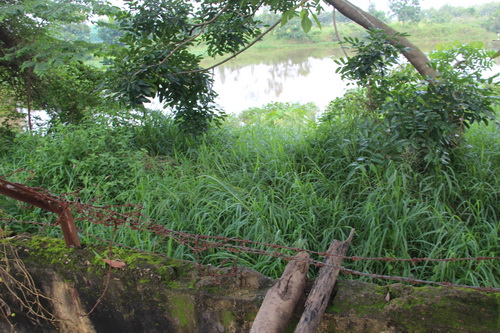Nearly 170,000 people escape the risk of exposure to dioxin
Residents living around Bien Hoa (Dong Nai) and Phu Cat (Binh Dinh) airports have escaped the risk of exposure to Agent Orange / dioxin.
>> US participates in dioxin treatment at Da Nang airport
>> Dioxin exposure: The risk of birth defects is 14 times higher
Phu Cat and Bien Hoa airports have escaped the risk of exposure to dioxin
On March 19, Mr. Le Ke Son, Director of the National Project to overcome the consequences of toxic chemicals used by the US during the Vietnam War (Steering Committee 33), said that from 2010 to 2014, the project Project of safe collection and landfill by international standard technology of more than 7,500 m3 of dioxin contaminated soil at Phu Cat airport (Binh Dinh).
"With this result, Phu Cat airport and about 47,000 people living in the vicinity have escaped from the list of dioxin hotspots in Vietnam. The Steering Committee handed over to the Ministry of Defense for management" , he said. Son said.

The lake in Bien Hoa airport, which is considered to have very high dioxin concentration.(Photo: Hoang Truong).
The other two "hot spots" about dioxin are Bien Hoa (with about 120,000 people living in the vicinity) and Da Nang has also achieved certain results. In particular, Bien Hoa airport has the largest volume of dioxin contaminated soil. In 2009, about 94,000 m3 of soil and sediment were safely buried and there are about 160,000 m3 of soil and sediment awaiting treatment.
Although the project has not been thoroughly treated, the project has prevented the spread of dioxin from Bien Hoa airport to the surrounding area , and recommended people to avoid new exposures.
At Da Nang airport, nearly 73,000 m3 of dioxin contaminated soil and sediment are being and will be treated by heat removal technology at the pile, which is expected to be completed in 2016. The project is awaiting the results of phase 1 treatment. in 2014 with 45,000 m3 of soil contaminated with dioxin.
Sponsored by the Global Environment Facility (GEF), the project was implemented from 2010 to 2014, with a total budget of more than US $ 5 million, to minimize the harmful effects of dioxin on ecosystems and human health. at the three airports above.
- Food is the main route of exposure to dioxin
- People exposed to dioxin can have genetic mutations
- Dioxin exposure: The risk of birth defects is 14 times higher
- Building dioxin detoxification center in Da Nang
- The US participates in dioxin treatment at Da Nang airport
- Germany closed nearly 5,000 farms
- HIV exposure and treatment
- What do people need to do to avoid the risk of radiation exposure?
- IPTD technology to treat dioxin in Da Nang airport
- Women with dioxin have fewer sons than girls
- This great invention is the solution to save hundreds of people in the sea of fire
- Da Nang cooperates with Japan to renovate dioxin contaminated soil
 Green tea cleans teeth better than mouthwash?
Green tea cleans teeth better than mouthwash? Death kiss: This is why you should not let anyone kiss your baby's lips
Death kiss: This is why you should not let anyone kiss your baby's lips What is salmonellosis?
What is salmonellosis? Caution should be exercised when using aloe vera through eating and drinking
Caution should be exercised when using aloe vera through eating and drinking